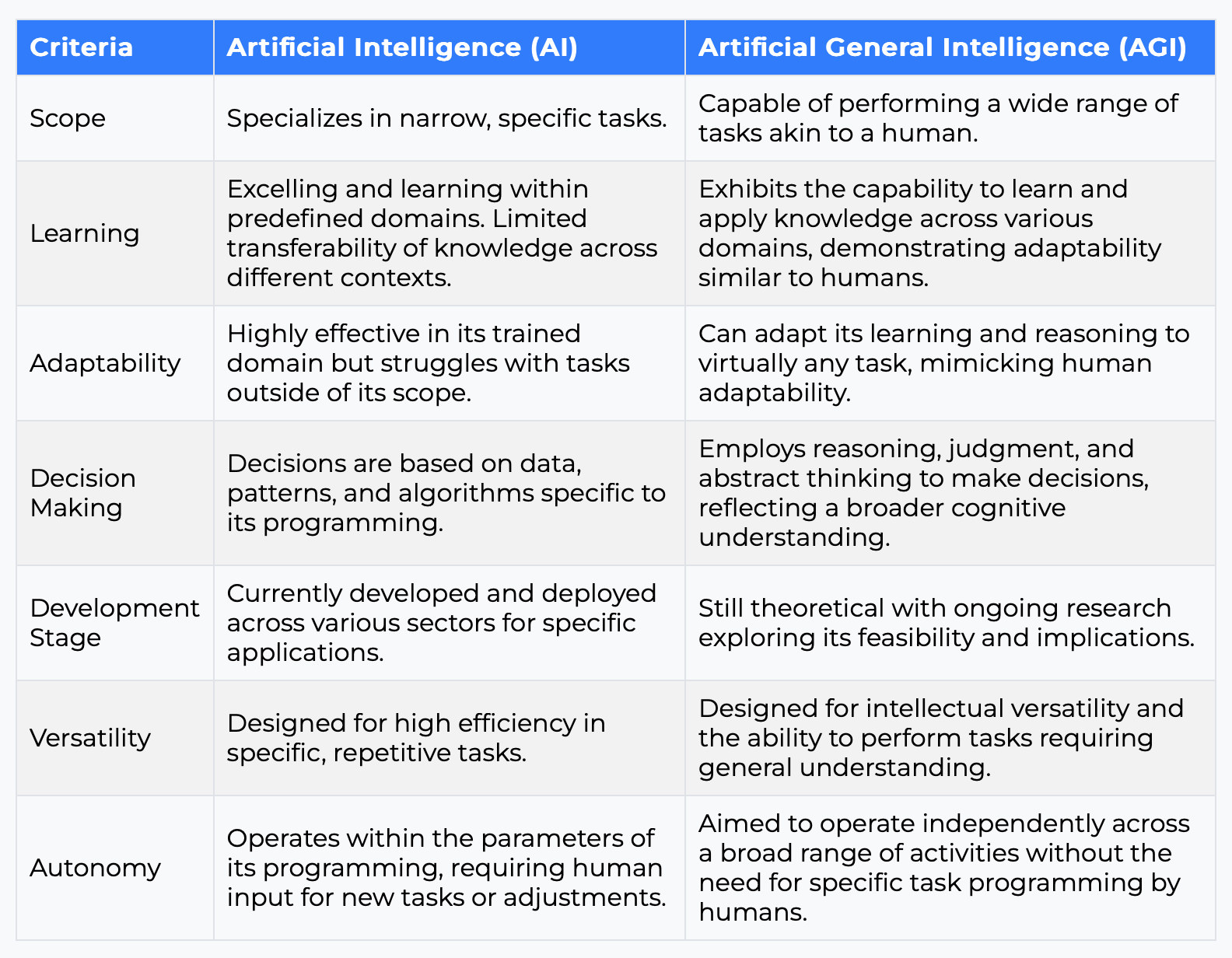In the rapidly evolving landscape of technology, the terms Artificial Intelligence (AI) and Artificial General Intelligence (AGI) often emerge in discussions, stirring curiosity and sometimes confusion. At KISHIVA, we're committed to demystifying these concepts, shedding light on their distinct characteristics, implications, and how they're shaping the future of businesses and societies. Understanding the nuances between AI and AGI is crucial for leveraging these technologies to supercharge your business with technology, as per our vision at KISHIVA.
What is AI?
Artificial Intelligence (AI) refers to the simulation of human intelligence in machines that are programmed to think like humans and mimic their actions. This can include learning, reasoning, and self-correction. AI systems are designed to perform specific tasks, ranging from simple ones like recognizing speech or patterns in data, to more complex activities such as driving cars autonomously.
AI operates on a spectrum of capabilities, from narrow or weak AI, where the focus is on performing a singular task with intelligence, to strong AI, which encompasses systems with broader, more general functionalities. Despite its advancements, AI, as we know it today, remains within the realm of narrow AI, demonstrating remarkable efficiency and intelligence within specific domains.
What is AGI?
Artificial General Intelligence (AGI) is a leap forward from AI, representing the theoretical pinnacle of this technology. AGI denotes a machine's ability to understand, learn, and apply intelligence across a wide range of tasks, akin to human cognitive abilities. An AGI system could perform any intellectual task that a human being can, including reasoning, solving puzzles, making judgments under uncertainty, planning, learning, integrating prior knowledge in decision-making processes, and even being creative and imaginative.
AGI remains a concept yet to be realized, with researchers and scientists viewing it as the future of AI. It encapsulates the ability of a machine not just to excel in a single domain but to transfer knowledge and adapt across diverse fields and challenges, displaying a level of versatility and adaptability that mirrors human intellect.
Key Difference between AI and AGI

Implications for Businesses and Society
Understanding the distinction between AI and AGI is more than an academic exercise; it's a strategic imperative for businesses, particularly for those looking to stay ahead in the digital transformation race. AI offers immediate opportunities to enhance operations, engage customers, and drive innovation within specific domains.
On the other hand, the prospect of AGI invites organizations to consider the broader implications of technology that could revolutionize not just tasks but entire industries and societal structures.
At KISHIVA, we are dedicated to helping businesses navigate the complexities of AI, preparing them for the transformative potential of AI. By understanding these technologies, organizations can make informed decisions about integrating intelligent systems into their operations, ensuring they remain competitive and innovative in a tech-driven present.
As we stand on the brink of these technological advancements, the journey from AI to AGI promises a future where the synergy between human and machine intelligence can unlock unprecedented opportunities.
At KISHIVA, we're excited to partner with businesses and leaders to explore these frontiers. Connect with us at support@kishiva.com to supercharge your business with the power of technology.